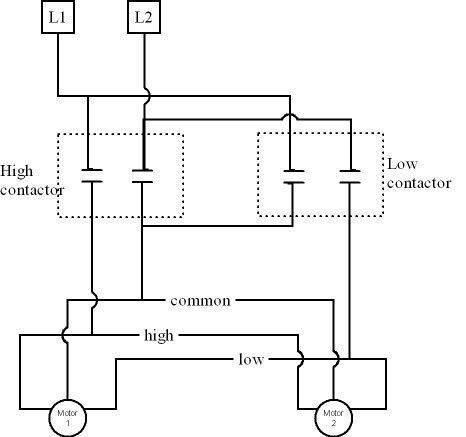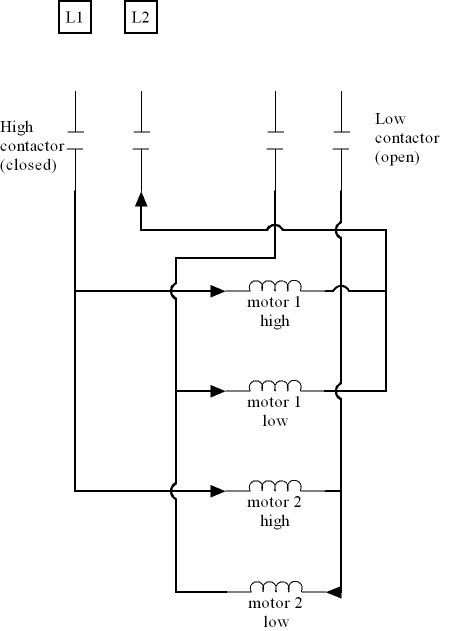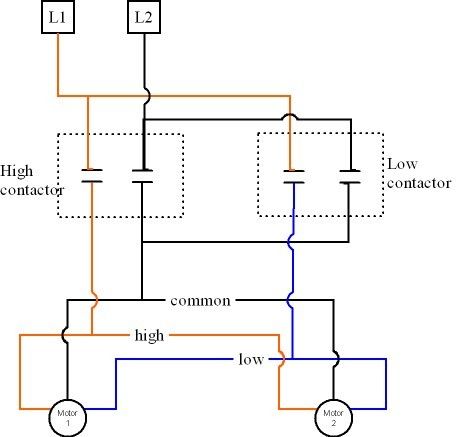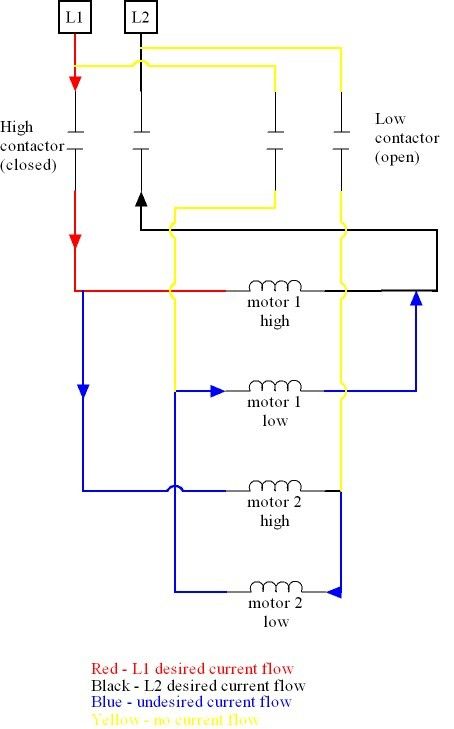JRW 70
Senior Member
- Location
- Eastern Central Missouri
- Occupation
- Testing and Engineer
Maybe I'm lost here but the circuits seem to trace
out to an operable system. This almost ( to me )
is a problem where the output from the 2 speed
setup is connected within the motor. I admit I may
not seen any errors in the wiring diagram and the
switch is indicated as a three position switch and
there are no crossovers ( once again as I see it )
With these kind of problems, it may be a good idea
to start at the motors, check them and move upstream
in a systematic way. This has saved me countless hours
and is a process of elimination.
This kind of situation is definately strange, but start at the
simple end (motors) first. I did not study the diagram in
great detail, but I don't think that's the problem ( could be
but I just don't see it )
JR
out to an operable system. This almost ( to me )
is a problem where the output from the 2 speed
setup is connected within the motor. I admit I may
not seen any errors in the wiring diagram and the
switch is indicated as a three position switch and
there are no crossovers ( once again as I see it )
With these kind of problems, it may be a good idea
to start at the motors, check them and move upstream
in a systematic way. This has saved me countless hours
and is a process of elimination.
This kind of situation is definately strange, but start at the
simple end (motors) first. I did not study the diagram in
great detail, but I don't think that's the problem ( could be
but I just don't see it )
JR






